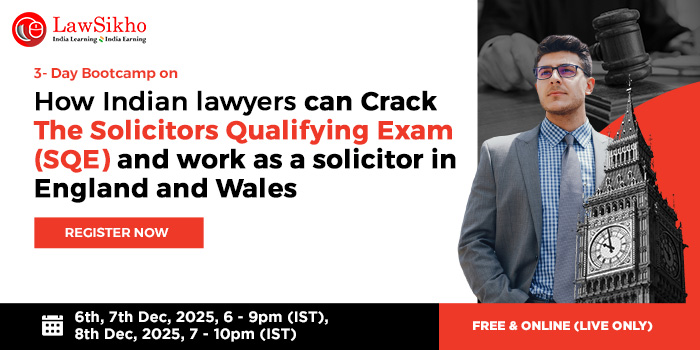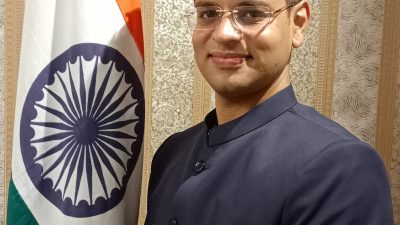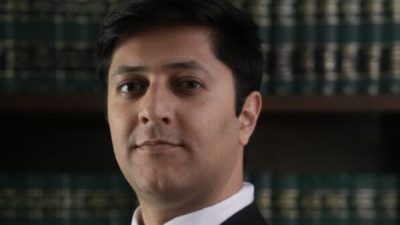Interviews
43515
0
0
“Over the years, I have witnessed how IP law has expanded from traditional Patents and Trademarks to addressing digital content, AI-generated works, and global enforcement challenges.” – Shipra Alisha Philip, Senior Associate at RNA Technology and IP Attorneys.
This interview was taken by SuperLawyer Team
Posted on March 27, 2025
This interview has been published by Anshi Mudgal and The SuperLawyer Team

With your extensive and impressive expertise in Intellectual Property matters, looking back on your remarkable career journey, what initially inspired you to pursue a career in law? What was the driving force behind your decision to specialize in the dynamic and specialized field of IP law, and how have you seen the field evolve over the years?
Growing up as a girl in Patna, a city full of ambitions, I always dreamed of making a difference. Growing up in a society where career paths often followed traditional expectations, I had ambitions that went beyond the norm. However, despite being surrounded by convention, I was fortunate to have parents and a brother who supported my aspirations and encouraged me to pursue my dreams. From an early age, I was determined to carve my own path and make a meaningful impact. I was driven by the idea that no matter where you come from, determination and passion can open doors to incredible opportunities. I have always been a creative person, drawn to ideas, innovation, and the power of original thought. That’s what led me to law because, at its core, law is about shaping and protecting ideas that can change the world.
As I delved deeper into legal studies, it was Intellectual Property (IP) law that truly captured my passion. It was thrilling to see how a single patent, trademark, or copyright could empower inventors, businesses, and creative minds worldwide. That realization fuelled my decision to specialize in this field. Also, while many areas of law are well-settled and fixed, IP law evolves constantly, adapting to technological advancements, new business models, and creative breakthroughs.
Over the years, I have witnessed how IP law has expanded from traditional patents and trademarks to addressing digital content, AI-generated works, and global enforcement challenges. It has transformed into a field that is deeply intertwined with the future of technology and business. Looking back, my journey has been about pushing boundaries, embracing change, and proving that creativity and ambition can redefine expectations. IP law continues to inspire me because it never stands still. It grows with society, with technology, and with the brilliant minds it seeks to protect.
Reflecting on the early stages of your career, from internships to your initial legal roles, what were some of the most formative experiences that helped shape your foundation in the legal profession, especially in IP law? How did these early challenges prepare you for your current success in this highly specialized area?
From the very beginning of my career, I had the opportunity to work at top-tier law firms, each playing a pivotal role in shaping my foundation in the legal profession. Every firm I worked at contributed uniquely to my growth, equipping me with the skills and confidence to navigate the complexities of IP law.
Starting with a strong litigation background, I developed a keen eye for detail and the ability to anticipate legal hurdles early on. As a fresher, meticulous attention to detail was the primary expectation, a skill I quickly honed while handling high-stakes IP matters. I was also encouraged to ask as many questions as possible, as my seniors often emphasized that “no question is stupid.” This supportive environment helped me shed any inhibition about seeking clarifications, allowing me to develop a deeper understanding of the law and intricate IP matters. These early experiences refined my analytical skills, strengthened my problem-solving approach, and laid a strong foundation for my career in IP law.
Over time, I was given direct exposure to client handling, allowing me to lead conferences and calls independently. This experience not only refined my communication skills but also solidified my confidence in the knowledge I had gained over time. It allowed me to apply that expertise effectively in my advisories, ensuring practical and strategic solutions for clients.
These formative experiences prepared me to take on greater responsibilities in my current senior role at RNA Technology and IP Attorneys. At RNA, I have had the opportunity to lead complex IP matters while also showcasing my expertise at international and national IP conferences, building strong professional networks. Additionally, my firm has encouraged me to contribute to the broader IP discourse through various publications, where I have explored pressing topics such as landmark international and Indian rulings and their impact on the Indian copyright and trademark landscape, brand challenges and counterfeiting in the nutraceutical industry, the impact of AI, IP, and data privacy in India’s growing medical tourism, the trends, regulations, and IP hurdles in the Indian pet food industry, and evidence admissibility in trademark disputes. What sets RNA apart is its commitment not just to the firm’s growth but also to individual professional branding. This support has allowed me to refine my expertise, expand my industry presence, and actively engage in thought leadership within the IP space. Each step in my journey has reinforced my passion for IP law and my ability to adapt to its ever-evolving landscape.
As someone with deep expertise in handling domain name disputes, particularly before NIXI, what are the key legal considerations that must be taken into account when addressing such issues? Could you share a particularly memorable or challenging case from your experience and how you navigated it, offering valuable insights for aspiring lawyers in this domain?
When addressing domain name disputes, several legal considerations must be taken into account:
- The complainant must establish trademark rights over the disputed domain. Even if the mark is unregistered, demonstrating extensive use and brand recognition can strengthen their case.
- The disputed domain name must be identical or confusingly similar to the complainant’s trademark. Minor variations, such as typo squatting, do not necessarily create distinctiveness.
- The respondent may avoid liability if they can prove legitimate rights or a fair use of the domain, such as using the domain for a genuine business unrelated to the complainant’s brand; being commonly known by the domain name; and/or making non-commercial, fair use of the domain.
- The complainant must prove that the domain was registered and/or used in bad faith, such as: acquiring it with the intent to sell at an inflated price or misleading consumers, phishing, or redirecting traffic to a competitor.
- A respondent may defend their case by proving legitimate rights, such as using the domain for a genuine business unrelated to the complainant’s brand; being commonly known by the domain name; and/or making non-commercial or fair use of the domain.
In a high-profile INDRP dispute, I defended a client against a corporation alleging bad faith registration. Through strong evidence, we proved:
- The domain had a legitimate, bonafide use.
- The complainant knew of the domain but took no action (acquiescence).
- Market research showed third-party usage of the complainant’s mark, weakening exclusivity claims.
- Inconsistencies in the complainant’s prior trademark office positions further undermined their case.
The arbitrator ruled in our favor, reinforcing that trademark ownership alone does not guarantee domain rights.
For aspiring lawyers in this field, my advice is:
- Assess legitimate interest. A trademark does not automatically grant domain rights. The complainant must prove bad faith registration and lack of legitimate interest on the respondent’s part.
- Prior knowledge of the domain without action weakens the complainant’s case. Always advise clients to review old records, emails, or correspondence for any indication of prior knowledge. As lawyers, conducting online research, scanning publicly available documents such as publications, interviews, advertisements, etc. can uncover evidence of acquiescence.
- Review past trademark claims and court proceedings to identify inconsistent pleadings of the parties.
- Market research is crucial. A thorough investigation into how a mark is used across different industries can weaken a complainant’s exclusivity claim and help establish generic or descriptive use of a term.
- Domain disputes are not won on allegations alone. Well-documented evidence, strong legal arguments, and meticulous research are essential to securing a favourable outcome.
- With the growing importance of online branding, domain disputes are becoming increasingly complex. Aspiring IP professionals must stay updated on digital enforcement strategies, evolving domain name laws and policies, and international best practices to remain competitive in this space.
Managing global trademark portfolios is no small feat. What are some of the most significant challenges you encounter when dealing with international trademarks, and how do you navigate these complexities to deliver exceptional results for your clients? Could you share the most complex or fascinating trademark matters you’ve dealt with?
Well, managing international trademarks in India poses challenges due to jurisdictional differences, procedural complexities, and evolving legal standards. Key challenges and strategies include:
- Classification Challenges: India follows the Nice Classification system, but jurisdictional variations in interpretation, overlapping classes, and administrative constraints can create uncertainties. Market practices and evolving product categories further complicate classification. Careful jurisdiction-specific analysis is essential.
- Registrability Issues: Descriptiveness and genericness are interpreted differently across jurisdictions. A comprehensive clearance search can help assess registrability and mitigate objections.
- Prior Use vs. First-to-File: Unlike strict first-to-file jurisdictions, India recognizes common law rights. Foreign brands without prior use may face opposition from local businesses. Proactive filings and documented use evidence are crucial.
- Trademark Squatting: Unauthorized third parties often register well-known foreign brands in India. Legal remedies like oppositions, cancellations, and rectifications, along with watch services, help address potential infringements early.
- Budget Constraints and cost-effective protection: Costs for trademark filings, renewals, oppositions, and enforcement can be unpredictable. A flexible budget should anticipate expansion needs and enforcement actions. Recommending prioritization of key markets and leveraging cost-efficient systems like the EU Trademark and WIPO’s Madrid System for multi-country filings can be beneficial.
- Competitive Monitoring: Tracking competitor filings and industry trends is essential. Regular trademark database analysis helps businesses stay ahead of emerging market developments.
- Record Maintenance: Outdated trademark records complicate enforcement and transactions. Prompt updates for assignments, name changes, and acquisitions ensure legal clarity.
- Leveraging Technology: Manual processes slow portfolio management. AI generated tools enhance efficiency in searches, classification, and trademark monitoring.
- M&A Due Diligence: Hidden conflicts or weak rights can impact acquisitions. Thorough due diligence, verifying ownership, status, and conflicts mitigate risks.
By addressing these challenges with strategic planning, businesses can efficiently manage global trademark portfolios while minimizing risks and costs.
One of the complex trademarks matters I handled involved a global brand facing objections from the Indian Trademark Office at the examination stage. Although our client’s brand had been adopted, registered, and widely used internationally long before, the objections were based on similar third-party trademark registrations that predated it in India. The key challenge was establishing the brand’s transborder reputation in India despite limited direct use. To build a strong case, we compiled extensive evidence, including global sales figures, media coverage, and proof of consumer awareness in India. We also examined international conferences where our client’s mark and product had been showcased, many of which were attended by Indian delegates, thus demonstrating brand exposure among potential consumers in India. Additionally, we submitted old correspondence from Indian entities inquiring about our client’s product under the disputed trademark. Through strategic arguments and well-documented evidence, we successfully secured the brand’s rights in India.
Trademark opposition and rectification petitions are complex and nuanced processes. How do you approach the preparation and management of these cases? What research tools do you rely on, and how would you assess the effectiveness of the trademark registry in resolving disputes in a timely manner?
My approach begins with comprehensive preliminary research, analysing the trademark’s history, including prior use, registrations, assignments, and any past opposition, rectification, or litigation. A strong opposition or rectification petition hinges on clear, compelling arguments. It is therefore crucial to assess the similarity or dissimilarity of competing marks through various legal principles, such as the Rule of Anti-Dissection and Dominant Feature, while also examining grounds like non-use, likelihood of confusion, bad faith adoption, misrepresentation, and inconsistent pleadings before judicial authorities and tribunals.
To establish prior rights and brand goodwill, I rely on market research, global brand reputation reports, advertisements, social media presence, publications, consumer recognition surveys, etc. Website archives, trademark journal publications, and business reports also help substantiate claims.
In terms of research tools, I extensively use trademark registry databases, WIPO’s Global Brand Database, EU trademark database, domain name databases, Registrar of Companies (ROC) records, social media searches, and online archives to track prior filings, international use, and potential conflicts. Litigation databases and court records are equally valuable in assessing past disputes involving the contested mark. Additionally, the use of AI-powered tools significantly enhances legal and trademark research, strategy-building and trademark monitoring to help identify potential conflicts more efficiently.
The Indian Trademark Registry has made improvements in handling disputes efficiently, particularly through digital filings and automation and open house helpdesk portal to address queries. However, challenges persist, including backlogs, procedural inconsistencies, lack of nuanced understanding of IP laws by hearing officers, and frequent adjournments, all of which delay swift resolutions. Despite procedural bottlenecks, leveraging technology alongside a well-researched and strategically argued case significantly increases the likelihood of a favourable and timely outcome.
As a respected leader managing a team of talented lawyers and paralegals, how do you ensure that workload distribution is both effective and balanced across your team, especially when dealing with high-stakes and intricate IP cases? How do you foster a collaborative environment to ensure your team works cohesively to meet client expectations and deliver top-tier results?
As a leader managing a team of skilled lawyers and paralegals, I believe in a strategic delegation approach, where tasks are assigned based on individual expertise, experience, and bandwidth.
I delegate legal drafting and opinion writing to my lawyers, ensuring they gain hands-on experience in core legal work. I thoroughly review their drafts, provide detailed feedback, and refine their arguments, helping them sharpen their legal reasoning and drafting skills. Where a matter demands deep legal analysis, I personally handle it to ensure accuracy and a strong legal foundation. For particularly complex or high-stakes cases, I seek insights from my partners, leveraging their expertise to strengthen our strategy. The paralegals support research, document and database management, basic drafting, and procedural filings, streamlining the workflow and allowing the team to focus on substantive legal work.
Collaboration is at the core of my leadership style. I encourage open communication and make it a point to ask my team, “What challenges are you facing, and how can I support you?” – a principle I learned from my husband. This approach also aligns with my firm’s core values and creates a friendly and supportive environment where challenges are addressed proactively, fostering both professional growth and efficiency. By maintaining clear guidance, open dialogue, and strategic delegation, I ensure that our team works cohesively to meet client expectations and deliver top-tier results.
To maintain balance and prevent burnout, I regularly assess workload distribution, keeping track of deadlines, case priorities, and individual capacities. Leveraging project management tools and AI-powered legal tech, we monitor case progress, streamline task allocation, and optimize efficiency, ensuring that no single team member is overburdened.
In pre-litigation enforcement, you play a crucial role in preparing legal notices, settlement proposals, and conflict resolution strategies. What key strategies do you employ to negotiate settlements before issues escalate into full-scale litigation? Additionally, what common pitfalls should companies be mindful of early on to avoid litigation concerning their IP assets?
Well, the goal is to resolve disputes efficiently while protecting the client’s IP rights. Before initiating any action, a detailed evaluation of the IP rights in question is a must. This includes assessing prior use, registrations, market presence, and the overall strength of the client’s position to determine the best strategy. A well-drafted cease-and-desist notice sets the tone for resolution. In fact, the language of the notice depends on the client’s approach. While it must be firm in asserting rights, it should also leave room for structured discussions. Rather than escalating conflicts immediately, I explore amicable solutions such as settlement options, coexistence agreements, licensing arrangements, branding/packaging modifications, or even buy-out options. This approach fosters dialogue while protecting legal interests. With courts increasingly emphasizing mandatory mediation in IP disputes, pre-litigation enforcement has evolved significantly. Many high courts, particularly the Delhi High Court, actively encourage mediation as the first step before litigation, recognizing its effectiveness in resolving complex conflicts. Whenever possible, I advocate for mediation or arbitration to secure cost-effective and swift resolutions, minimizing the burden of litigation. Beyond legal considerations, I believe it’s essential to weigh the commercial interests of both parties. An enforcement strategy should aim for long-term business viability rather than just short-term legal victories. By balancing legal rights with practical business solutions, disputes can often be resolved more efficiently while maintaining brand integrity and commercial relationships.
Many businesses make the mistake of launching a brand without conducting comprehensive trademark searches, leading to costly disputes and rebranding efforts. A thorough clearance search can prevent such legal complications. Weak IP contracts are another common issue. Poorly drafted agreements in licensing, joint ventures, or vendor relationships can result in ownership disputes. Clearly defining rights, obligations, and dispute resolution mechanisms is essential. Inconsistent brand use and failure to enforce trademarks can weaken legal rights over time, making regular monitoring and timely action against infringers crucial. Additionally, businesses often neglect to maintain proper evidence of trademark use, such as first use records, advertising, and consumer recognition, which are vital for defending exclusivity in disputes. Rushing into poorly negotiated settlements can also lead to recurring conflicts; settlement agreements should clearly define future use, licensing terms, and territorial rights to ensure long-term protection. By addressing these pitfalls proactively, companies can safeguard their intellectual property and minimize litigation risks.
Balancing the demands of a challenging legal career with personal life is undoubtedly a tough task, especially in such a high-pressure profession. How do you manage to maintain equilibrium between your professional commitments and personal well-being? Could you share some strategies that help you preserve your health and sustain a balanced lifestyle, even while excelling at the top of your field?
Maintaining equilibrium is not just about time management, it’s about setting priorities and boundaries. Efficient planning of work ensures that deadlines are without unnecessary last-minute stress. Delegation also plays a crucial role. I entrust responsibilities to my team while maintaining oversight, allowing me to focus on high-level strategy and complex legal matters. While the legal profession often demands round-the-clock availability, I try to carve out time for my family, my two adorable cats and my personal interests like travelling, reading and watching movies. Setting realistic expectations with clients and my team helps manage workload without burnout. Also, self-care is important. Whether it’s staying physically active, pursuing hobbies, or simply taking short breaks during the day, these small habits help sustain energy and focus. Additionally, having a strong support system, both professionally and personally, makes all the difference. At the end of the day, excelling in this profession is not just about working hard, it’s about working smart, staying innovative in your work and ensuring that both professional success and personal well-being go hand in hand.
Your broad expertise across various legal areas is truly commendable. For young lawyers looking to build a diverse and successful practice like yours, what key advice would you offer? What skills, attributes, and mindset do you believe are essential for navigating the competitive and multifaceted world of law, particularly in the ever-evolving field of IP?
Adaptability and continuous learning are key for diverse and successful practice in law. IP law evolves rapidly, so staying updated on legal developments and industry trends is essential. Strong research, analytical, and communication skills are crucial for presenting clear, persuasive arguments. Beyond technical expertise, a problem-solving mindset and commercial awareness set a lawyer apart. Clients value strategic, practical, and business-oriented solutions rather than just legal advice. Lastly, mentorship and networking open doors to invaluable insights and opportunities. Success in law comes from critical thinking, innovation, and integrity in navigating legal challenges.
Get in touch with Shipra Alisha Philip –







No comments yet
Be the first to share your thoughts about this interview.